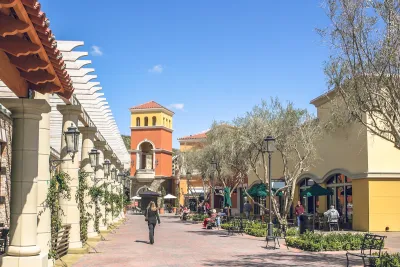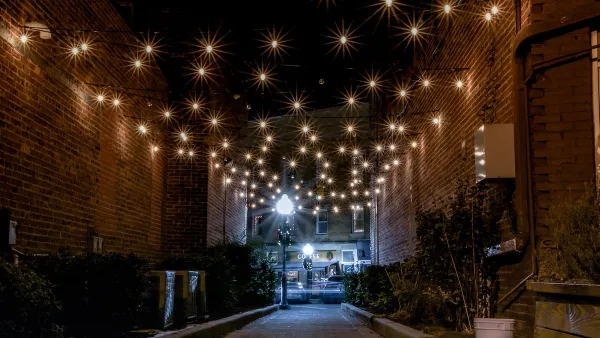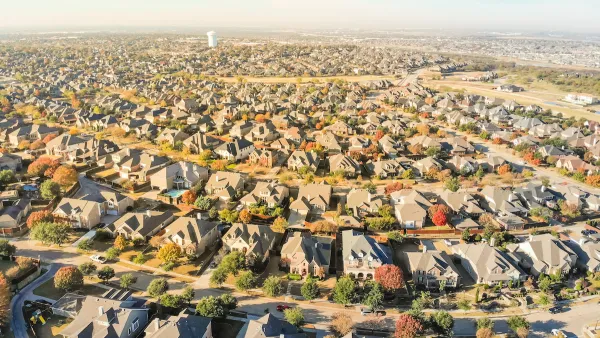Is the recent trend to build more walkable suburbs a sign of sustainable change?

Suburban developments are increasingly trying to mimic the walkability and vibrancy of urban neighborhoods, writes Alan Ehrenhalt in Governing. Is this a purely aesthetic shift, or is it a real movement toward more sustainable suburbs?
In Tempe, Arizona, 10 miles from Phoenix, a new community called Culdesac opted to remove private cars, offering access to transit, shared micromobility, and rental cars instead. According to Robert Steuteville, removing the need for car infrastructure inside the development “allows for a porous, fine-grain urban pattern with a network of narrow, shaded pedestrian-only paseos, intimate courtyards and a central plaza.” However, limited transit options mean that residents will often have to drive when leaving the community.
Ehrenhalt admits that the trend could be a blip. Lower housing costs — which could be brought on by the adaptive reuse of office buildings into residential units — could promote a stronger resurgence for urban city centers. But the strong demand for walkability among younger people is encouraging. “And if there is one thing we learned from the experience of the baby boomers, it is that when enough members of an emerging generation want something, they stand a very good chance of getting it.”
FULL STORY: A Possible Future for Downtowns Out in the Suburbs

National Parks Layoffs Will Cause Communities to Lose Billions
Thousands of essential park workers were laid off this week, just before the busy spring break season.

Retro-silient?: America’s First “Eco-burb,” The Woodlands Turns 50
A master-planned community north of Houston offers lessons on green infrastructure and resilient design, but falls short of its founder’s lofty affordability and walkability goals.

Delivering for America Plan Will Downgrade Mail Service in at Least 49.5 Percent of Zip Codes
Republican and Democrat lawmakers criticize the plan for its disproportionate negative impact on rural communities.

Test News Post 1
This is a summary

Test News Headline 46
Test for the image on the front page.

Balancing Bombs and Butterflies: How the National Guard Protects a Rare Species
The National Guard at Fort Indiantown Gap uses GIS technology and land management strategies to balance military training with conservation efforts, ensuring the survival of the rare eastern regal fritillary butterfly.
Urban Design for Planners 1: Software Tools
This six-course series explores essential urban design concepts using open source software and equips planners with the tools they need to participate fully in the urban design process.
Planning for Universal Design
Learn the tools for implementing Universal Design in planning regulations.
EMC Planning Group, Inc.
Planetizen
Planetizen
Mpact (formerly Rail~Volution)
Great Falls Development Authority, Inc.
HUDs Office of Policy Development and Research
NYU Wagner Graduate School of Public Service





























